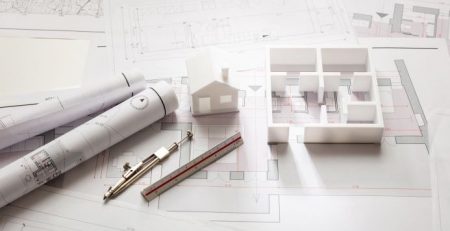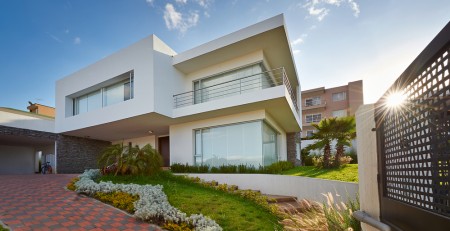Three Architectural Trends in 2022
Architecture is influenced by culture and important events that happen. It was certainly the case with COVID-19, which saw the industry look for new ways to open-up houses to natural lighting. In this article we feature three main architectural trends that will define this year and will leave its mark on the future of house construction.
Sustainable Architecture
There are two very important elements that render sustainable architecture, not only something that people are looking for, but also a definite need, in this day and age. The first is the respect for the environment, that most people around the world are considering a primary concern. Houses need to be energy efficient, in order to consume less, so that we protect what is left of our environment and enable it to grow again. That can clearly be seen through the use of aluminium windows taking over full walls. They enable the house to be warmed solely by natural light. In fact they can be built to almost any size and shape, as you can discover on aluprof.eu/en.
The second element is the need to reduce our use of energy, in an important moment of crisis in Europe. The war going on between Ukraine and Russia has completely broken down Europe’s capacity to supply itself. And so, it emphasizes even more the need for houses architecturally built to sustain themselves, as much as possible.
Prefabricated Architecture
It has been many years that this trend is becoming more and more popular. There are important reasons justifying it, as well. When you buy a prefabricated home, you can be assured that it will cost less and that the house will be more sustainable and efficient. Modular design, which is what prefabricated houses are all about, tend to pay more attention to details than regular construction. Buyers can fully customize them, just as they would do if they were buying a car. It is logical, since the house is being built inside a manufacturing plant. Furthermore, suppliers also handle interior designs (in some cases), which really guarantees uniformity. There are various materials that can be used as well, including recycled containers, which can also help the environment.
3D Printing Architecture
We have all seen it by now, in photos or videos. A machine printing out a house. It may seem strange and basic, but the truth is, 3D printing can create houses much more complex than a builder could ever do. The way that this technology works is that the plans are inserted into the printing machine through a software called CAD. Then, the machine gets to work and reproduces precisely what it has been told to create.
Therefore, complexity is removed, since the machine is simply meant to reproduce what it is asked to do. When a builder is on site, it would be impossible to go into such details, or the work itself would be never-ending. Therefore, look for more 3D printed houses in the future, as architects let their imagination run free. Since it will also reduce the costs and the time it takes to deliver the final project, there are no reasons in sight that could stop 3D printing architecture to gain a lot of ground, in the years to come.




